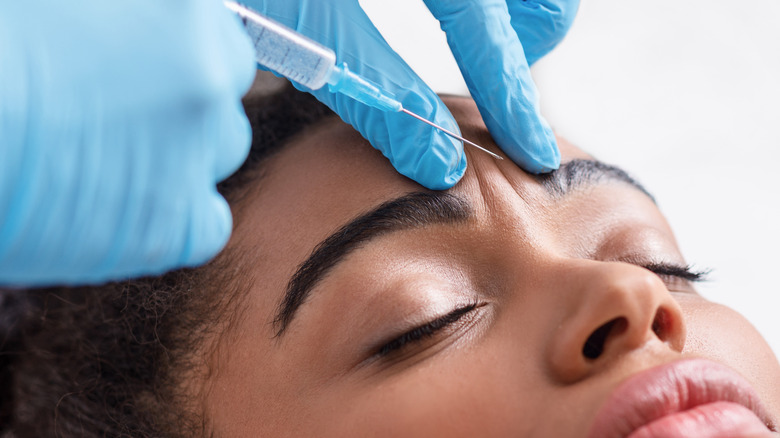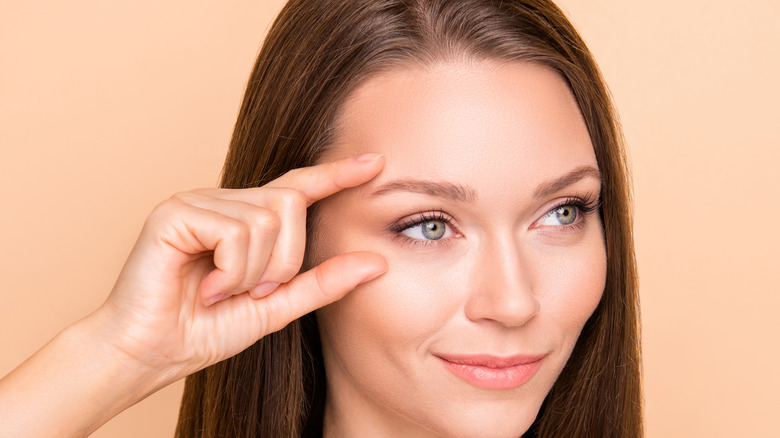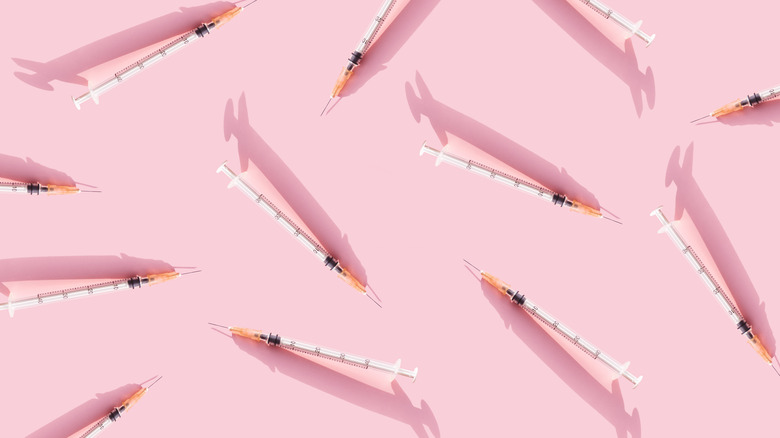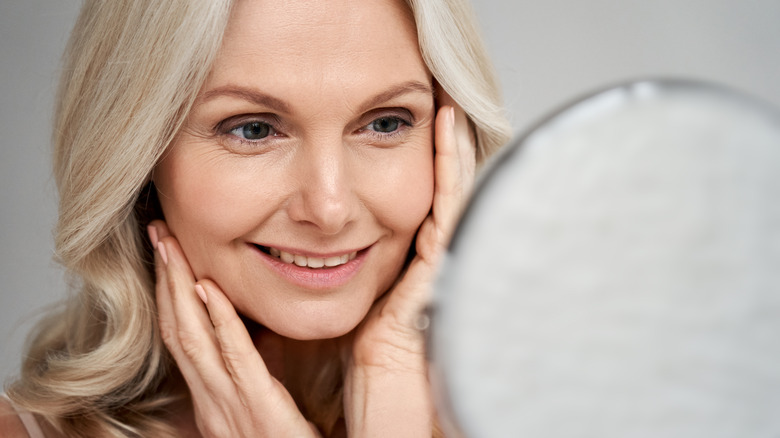What's The Difference Between Botox And Dysport?
As we age, the amount of collagen our skin produces starts to drop — and it happens sooner than you may think. Scientific American reports that after we turn 20, our skin generates 1% less collagen each year. Not to mention, the amount of elastin created by our skin drops, too. As a result, our skin becomes more fragile, loose, and wrinkled. This doesn't even include the impact of smoking, everyday environmental pollutants, heavy sun exposure, and other habits that diminish the skin's youthfulness.
Whatever the reason may be, aging is inevitable. However, injections like Botox and Dysport have become popular go-tos for restoring aesthetically pleasing facial features that were lost over time. In fact, Insider reported that 4.4. million Botox procedures were performed in 2020. Though Botox was among the first non-invasive skin treatments on the scene, Dysport has had a growing reputation since being approved to be used in the U.S. in 2009 (per Eternal Demertaology + Aesthetics) and is now available in 69 countries around the world (per Dysport).
On a surface level, it seems Botox and Dysport are one and the same. Here, we'll explore their differences to help you decide which one is right for you.
Botox and Dysport treat different parts of the face
According to Healthline, the procedure for Botox and Dysport is the same. They're both performed at a doctor's office, only take a few minutes to complete, and have minimal recovery time. With that said, the parts of the face they treat are different. While Botox has been given clearance to treat forehead lines, crow's feet, and glabellar lines (the space between your eyebrows), Dysport only treats glabellar lines.
The amount of injection you'll need depends on what part of the face is being treated. The glabellar lines alone involve 20 units at 5 different injection sites. Add the forehead and you're looking at twice as many units and injection sites. Treating crow's feet alone requires 24 units at 6 injection sites. If you want to go big and address all three, that requires 64 units.
Given that there aren't any immediate side effects, you'll be able to go home as soon as the procedure is done.
Dysport is more efficient than Botox
Board-certified facial plastic surgeon Dr. William A. Kennedy III told Byrdie that Botox kicks in within 3-5 days. Dysport, on the other hand, shaves off 24 hours and starts working within 2-4 days. Not only does it work faster, but its overall efficacy is supported by 3 different trials.
A 2011 study published in The Journal of Clinical and Aesthetic Dermatology reported findings from a trial, which in all fairness was sponsored by Dysport, that supported the idea that Botox wasn't as effective as Dysport.
A paper published in The National Library of Medicine in 2010 compared studies that looked at the dosing, efficacy, and safety of both products. It suggested that Dysport had a 90% efficacy rate, while only 75% efficacy was achieved by Botox.
Another study published in the Journal of Drugs in Dermatology in 2011 indicated that, based on experiments conducted on 20 subjects, Dysport worked quicker. In addition, Dysport it was reported that Dysport wasn't as painful at the injection site as Botox.
Botox has more FDA approvals
According to Drugs.com, both Botox and Dysport are approved by the U.S. Food and Drug Administration (FDA) beyond cosmetic use.
In addition to glabellar lines, the FDA cleared Dysport to be used for medical conditions including cervical dystonia, adult spasms, and spasms that occur in upper and lower limbs experienced by children over the age of 2 and teenagers.
Botox is approved to help with those same issues such as well as overactive bladder, urinary incontinence, chronic migraines, excessive sweating, blepharospasm, strabismus, and cervical dystonia.
When Botox is used specifically for frown lines, crow's feet, and glabellar lines, it's referred to as Botox Cosmetics — but Botox and Botox Cosmetics are the same things. As MedicalNewsToday pointed out, Botox is a neurotoxin that's primarily used for cosmetic procedures. However, when used in small doses, the same product can also be used to treat certain medical conditions.




